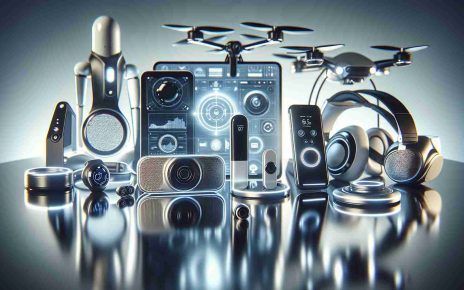- Yamanaka factors could revolutionize medicine by reducing aging-related illnesses through cellular rejuvenation.
- The potential decrease in pharmaceutical waste could lead to environmental benefits by minimizing pollution.
- Extended lifespans may shift societal norms, requiring changes in education, career, and retirement policies.
- Anti-aging biotechnology could disrupt traditional economic sectors, promoting innovation and adaptation.
- Ensuring equitable access to anti-aging advancements is crucial to prevent widening social divides.
The promise of turning back the biological clock has leapt from the pages of science fiction into scientific reality, thanks to the remarkable potential of the Yamanaka factors—Oct3/4, Sox2, Klf4, and c-Myc. These genes, initially celebrated for their ability to reprogram cells, are now at the forefront of redefining what it means to age, sparking excitement and debate worldwide.
A New Dawn in Medicine
Imagine a world where aging-related illnesses are significantly diminished, not through lengthy treatments but through the rejuvenation of our own cells. The application of these dynamic genes in regenerative medicine could lead to less pharmaceutical waste, reducing pollution and contributing to a cleaner environment. This medical revolution promises not just to extend life but to enhance its quality, reshaping global healthcare and environmental impacts.
Societal Shifts and New Norms
As we stand on the cusp of longer, healthier lives, traditional life milestones may shift dramatically. The extended lifespans offer the prospect of redefining education, career, and retirement, encouraging policies that support lifelong learning and vibrant golden years. This shift also necessitates a reevaluation of societal norms to accommodate the newfound longevity, ensuring healthy dynamics in our communities.
Economic Transformation
The rise of anti-aging biotechnology heralds both opportunity and upheaval in economic landscapes. While promising growth and job creation in new sectors, it challenges existing age-focused industries to innovate. It’s an era of reinvention, compelling industries such as healthcare, insurance, and finance to adapt swiftly to remain sustainable.
The Global Challenge
Given the profound implications, it’s essential to address the equity of access to such groundbreaking technologies. Ensuring these advances are available to all, without increasing social divides, remains a critical challenge for global policymakers.
The journey towards unlocking the secrets of aging is not just about extending life—it’s about redesigning our world to embrace these advancements, balancing scientific innovation with ethical consideration for a thriving, sustainable future.
Unlocking Youth: The Future of Anti-Aging and Its Global Implications
How Do Yamanaka Factors Revolutionize Anti-Aging Research?
Yamanaka factors, the Nobel Prize-winning discovery by Shinya Yamanaka, have opened new avenues in anti-aging research by allowing scientists to reprogram adult cells into pluripotent stem cells. This breakthrough means cells can potentially be rejuvenated or replaced, tackling the root causes of aging and age-related diseases.
Key Pros:
– Could significantly increase human lifespan and healthspan.
– Reduction in age-related diseases like Alzheimer’s and heart disease.
– Potential environmental benefits due to decreased pharmaceutical waste.
Limitations and Cons:
– Ethical concerns about accessibility and potential misuse.
– Biological risks associated with extensive reprogramming.
– Economic disparity in initial access to such treatments.
Predictions:
By 2040, it’s predicted that personalized anti-aging treatments will be mainstream, leading to a paradigm shift in how we perceive aging and medical care.
What Are the Societal Implications of Extended Human Lifespans?
As medical advancements promise longer, healthier lives, societal structures will be profoundly impacted. Lifelong learning and multiple career changes could become the norm, requiring a complete overhaul of current education and retirement systems.
Trends and Insights:
– Rising interest in lifelong education and skill development.
– Delayed retirement age and the need for pro-age policies.
– Shifts in family dynamics and generational interactions.
Security Aspects:
The integration of advanced biotechnologies necessitates robust security measures to protect sensitive genetic information against misuse and privacy breaches.
How Will Anti-Aging Technologies Transform Global Economies?
The economic landscape is set for a significant transformation as anti-aging technologies become prevalent. While new markets will rise, particularly in biotech and healthcare, traditional sectors must pivot to remain relevant.
Market Analysis:
– Anti-aging technology is projected to create substantial growth in biotech, estimated to reach trillions by 2050.
– Traditional sectors (e.g., pension funds, pharmaceuticals for chronic diseases) may face downturns unless they innovate.
Use Cases in Economic Sectors:
– Healthcare: Shift towards preventive rather than reactive care.
– Insurance: New products focusing on longevity rather than end-of-life expenses.
Innovations and Trends:
Emerging companies are already exploring related fields such as regenerative medicine and personalized healthcare, setting the stage for widespread implementation.
For more on these transformative technologies, visit the pioneering research in regenerative medicine at Harvard University or explore investment opportunities in biotechnology through J.P. Morgan.



